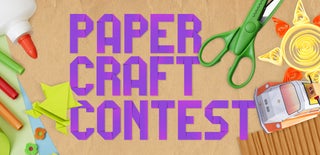Introduction: Full Scale Fighter Jet Cockpit From Cardboard
Here is my project of cheap, durable, gluelles, assemble dissasemble and hope that kick-ass looking fighter jet cockpit, on which i am working more than two years and finally i can say that is ready to hit your man's caves.
I am animator and graphic artist, so i payed attention for details, promo video and graphic part. In everything are hundreds hours of work, no Pro companies involved ;).
Since i published it i had positive feedback, so i decided to place it also on Instructables to get some feedback from proffesionals.
Just my angry wife still complaints why kids have no space to play and why i am spending free time in a cardboard box. At least she doesn't need to clean the floor in living room.
Ready? let's go to first step.
Step 1: Fighter Jet Cockpit- Choose Your Design and Create 3D Mesh
There are two ways how to get data for your cockpit kit
1) You can create it from scratch ,but you need to be skilled in some 3d modeling software, texturing, photography, Photoshop and Illustrator. Also Pepakura designer , but it is easy to learn.
2)Or now is avaliable on our Online store for download http://dogfightboss.com/Online+Store
Now i will explain how to create it from scratch, not every details, supposing that if you choose this way, you are familiar with modeling, texturing and photography.
Choose Aircraft what you like most. In my case i choosed F-22 Raptor and because i am working in 3ds Max every day, i created fuselage and choosed cockpit section, sliced front and back, closed mesh in cuts and export to Pepakura designer. There you need to define parts. Some of them are curved, so Pepakura will unfold all and give you clear idea what parts of surface need to be sliced and how big sections you will get.
Sure you need to play with the settings and seams to get best result and maybe go back here in future to redesign some of it, but it's fun to explore all possibilities and inventing best way. Just one advice, in 2D menu turn off ''show flaps''.
Then you import your unfolded fuselage in curves to 3DS max again and you can grab your original 3D model, split it for same object like Pepakura did and by Morph modifier animate into the frames from curves. This will be very useful later to see how to unwrap and texture your kit.
Step 2: Fighter Jet Cockpit- Create the Skeleton
Like almost every creatures(except that invertebrates punks) my cockpit need skeleton to stick together, so you need to plan each rib carefuly and think about it to create useful part of your construction, not useless. But first you need to decide , or ask priting company, how thick cardboard they are able to cut. That is very important!
I am using 4 mm corrugated cardboard, so i created vertical and horizontal boxes as ribs in my original 3d model (need to be closed, no holes) and when i was happy with places, apply ProCutter modifier to get ribs in shape of surface. (your surface should be scaled before by 4 mm to get inner shape, best to do it by Shell modifier). When this is done, you need to create 4mm notches in every crossections between ribs, also for surface parts to fold it in vertical ribs. But these notches will be 8 mm, because two flaps is going in .
Then you rotate all and place to 0,0,0 axis, spread on sheets in size you asked in Printing company ( in my case is 245x200 cm pritable area on their UV printer and similar for CNC) and sort all to rectangles of this size. After you select each rib, in edit poly choose Borders, select all borders and click on ''create spline from selection'' button.
Here you are, you have splines almost ready for cut ;). Easy no? No? Yes i know, i was finding best way almost two years. But don't worry, you are almost done with the easy part of this project ;)
Step 3: Fighter Jet Cockpit- Texturing
And yes ,this is most trickiest part, if you have some experience with texturing, good for you and you can at least use your knowledge to find unwrap modifier faster, because rest is completely different. For unwrap you have ready sheets in size 245x200 (in my case), so you need to create blank texture in 180 DPI 245x200, select all parts from one sheet, apply this texture,apply uvw Map-planar - lenght 245, width 200 cm and if its needed, move it by gizmo exactly to the rectangle which represents the sheet. then bake your unwrap to texture in same aspect ratio like you have it in max and open it in Photoshop.
If you have headache from this, grab your camera and go to nearest aircraft Museum and make as much as possible macro photos of surfaces, gauges, cockpits etc. you will need it! ( If you think you took good pics, please show it to me and we can make exchange, because i need also other planes than we have in Czech republic)
You have to bear on mind that textures will be huge, 15000x18000 pixels for one sheet aproximatelly.
Stitch your photos and place it on baked unwraps in Photoshop. Now when you apply texture on all parts in sheet in 3ds max, you can see the result on 3D model if you done your homework with Morphing animation.
Step 4: Fighter Jet Cockpit- Preparing for Print&cut
Now you have all textures, all curves done, but just few more things. First, create some marks on cutted parts to recognise what part is and if you grabbed sixth rib or pizza box. Also create marks what is back and what is front.
Then create flaps with locks for all outer parts and flaps for horizontal ribs, to bend it and, glue or use mr.groovy's box rivets.
And make scale! create line in lenght exactly 100 cm place it in some corner and you'll be sure that Printing company will not send you cockpit 1:144 scaled. In this stage you should take all curves along with sheet rectangles and export it to DWG, if you don't have , ask someone to open it in some CAD soft and reset wiev to top. From some strange reason is saved in perspective, but resaving from CAD also gives it proper curves coordinates which are needed for CNC.
Now import dwg to Illustrator, divide lines for cutting and lines for spade by color, split it by sheets and to each sheet import texture (Need to be in CMYK) and place it to exact spot to copy lines from baked layer. When is ready, in photoshop turn off baked unwrap, save it as tiff (CMYK) and replace in Illustrator, then save as PDF (ask company foe exact setting) and send them to print,spade and cut.
Step 5: Fighter Jet Cockpit- Building of the Cockpit
When you get the cockpit, you can dance around for the while, screaming and laughing like insane, because you are going to build full scale cockpit from cardboard at your house, so one or two more crazy things will not make the difference :). My wife insist to see other guys like me to ensure herself that she didn't married mad man.
But back to our project, when you check all the parts, make angry call to printing company and they send you fixed parts, you can start with building. To be honest, now i have fifth version and i can say that finally is perfect.
So if you want to skip all dissapointments, i will offer soon downloadable version on dogfightboss.com.
Always bear on mind, Count with thinckness everywhere, shell modifier will help you to understand and always take outer surface for print, in other case you'll find some parts too short to fit.
I created animation as some sort of videotutorial, I hope you enjoy it.
Step 6: Fighter Jet Cockpit- Hardware
Don't forget to add hardware! I built in Thrustmaster Hotas Warthog, Saitek combat rudder pedals, 22'' display and currently working on curved screen since i have two projectors. But you can use what you have at home.
Now i am on most immersive project on the world in simulation, so please stay tuned and if this will work, i will make new instructable.
I hope you enjoyed my instructable and I'll be happy if you support my project in contest's on Instructables and onfacebook, google+
Thank you very much for reading!
Any comments, advices are more than welcome!
Lukas Homola
Step 7: Bonus: Gameplay

Second Prize in the
Papercraft Contest

Runner Up in the
Formlabs Contest

Participated in the
Enchanted Objects













